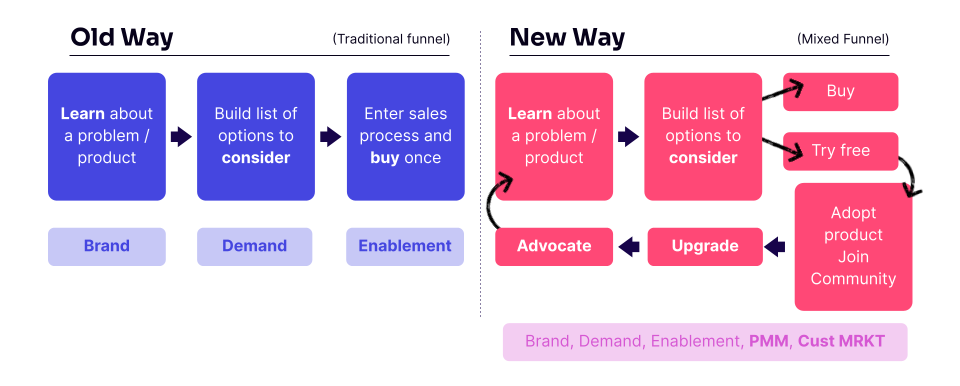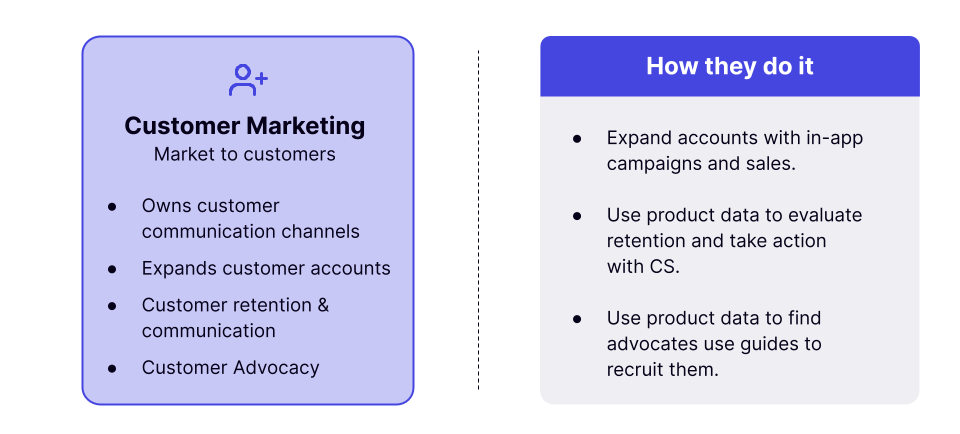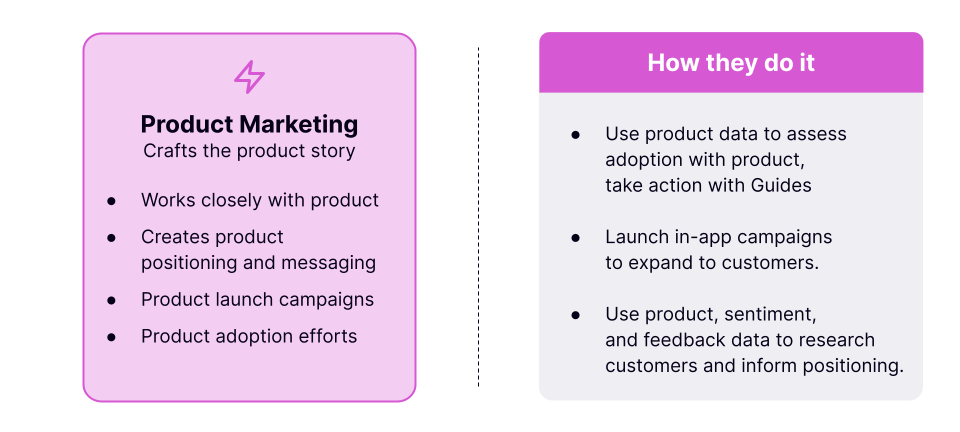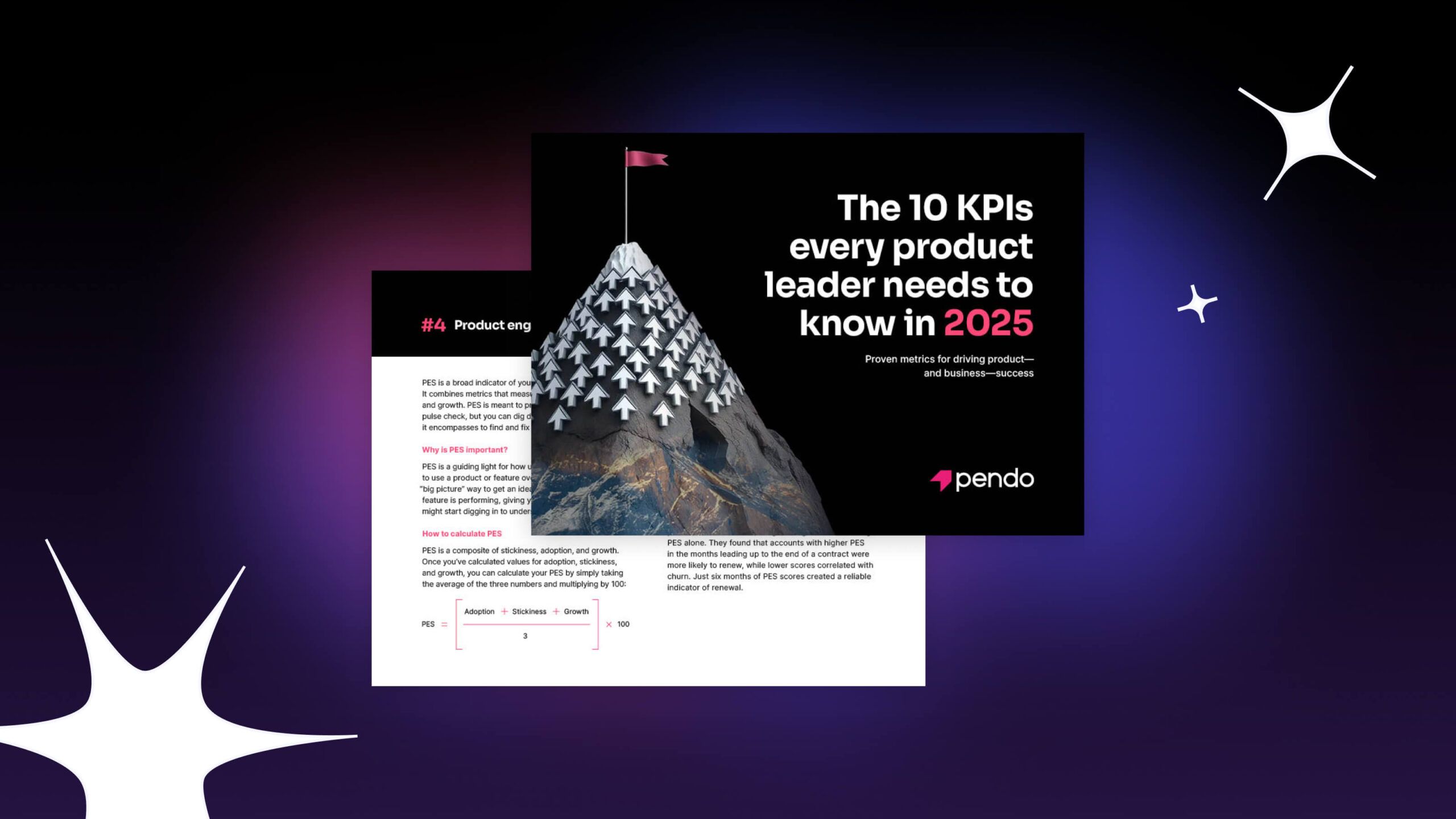The two marketing functions every product-led company should invest in
Back in December, I wrote about how marketing has changed as a result of companies becoming more product led. In that piece, I used the word “pizza” 14 times. I used the words “product marketing” once, and “customer marketing” zero times. In retrospect, this was a mistake. Too much sauce, not enough che… I’ll just stop with the analogy.
In my previous post, I shared five important changes marketing teams must make in order to truly be product led—but I didn’t talk enough about how to do it. In order to implement product-led strategies successfully, it’ll likely require a cultural shift at your company. But there is one clear way to get better at marketing in a product-led world: Invest in product marketing and customer marketing.
The changing user (and what it means for marketing teams)
With any type of marketing, it’s critical to understand your audience before you dive into the tactical work. Today’s typical software user has changed dramatically, and companies need to understand these changes as they adapt their business and marketing strategies. So let’s start there.
Today’s users have zero patience to operate on anyone else’s schedule but their own. They like being able to start using a new tool for free, self help, and learn by doing. While users are more technical, they have less appetite for technical feature lists. They’d much rather learn how your product can solve their problems rather than the details of the technology. Finally, they really hate email. Email contains so much noise that as a channel, it’s pretty ineffective to reach and connect with your audience. It can still be somewhat effective—but it’s not the marketing powerhouse it used to be.
In the wake of these changes, smart companies are adapting their go-to-market strategies. Instead of a rigid one-time sale, companies are creating free versions of their products that enable users to experience value, and then upgrade with or without a sales assist. Instead of pitching features to users, product-led companies understand users’ problems and suggest solutions. Instead of relying on in-person or over-the-phone onboarding, support, and training, they lean on the product to help. And finally, instead of only using email, they build a cohesive messaging strategy across email and in-app to ensure customers engage with content that will fuel their success.

We can think of these efforts as modern go-to-market strategies. But when you look at them as a whole, you can see that an adapted marketing funnel has emerged. It’s a bit more complicated—and more of a flywheel than just a simple funnel.
The rise of product and customer marketing
Most companies are actually pretty well set up to do product-led marketing. The biggest questions they have to answer are: “What team should do this new work?” and “What tools do they need to support it?” This has led to the rise of product marketing and customer marketing teams. These two functions have been around for a while, but only in the last five years have experienced massive growth as a craft, especially at software companies. In terms of team structure, you’ll often see customer marketers nested under a larger wing of product marketing or product marketers doing customer marketing work. There isn’t a true standard yet.
Let’s take a closer look at each of these subsets of marketing.
Customer marketing: Expansion, retention, and advocacy
Companies that aren’t product led might have customer marketing teams, but the role is even more impactful at product-led organizations. For example, customer marketing owns customer communication channels. This always means email, but at a company with a larger free and paid user base it also means in-app messaging—a far more effective marketing channel than email (Pendo customer Healthicity saw 12x more engagement with in-app guides vs. email).
Customer marketers can use email and in-app communication together to onboard, nurture, upgrade, and cross-sell users much more effectively, with or without sales. This makes their role much more tied to revenue. Not only does this strategy create a more cohesive lifecycle journey for customers, but it allows marketing teams to have a greater impact by running highly personalized programs in an automated, scalable way.

Customer marketing teams can also have a huge impact on retention. Armed with product usage data and in-app guides, they partner with customer success teams to target users who are at risk and steer them to high-value features and workflows. By looking at product feedback and NPS responses, it’s also easy for customer marketing to identify potential advocates. For example, they can use in-app guides to ask champions for stories, case studies, or reviews while they’re already engaging with the product. At Pendo, we see customer marketers using our product for all of these use cases.
Product marketing: Adoption, launches, and data
Similar to customer marketing, product marketers at product-led companies can have a much larger impact on key business outcomes. For example, at product-led companies, product marketing functions work with the product team to understand where product adoption is weak, and implement in-app campaigns (in partnership with customer marketing) to increase adoption. At Pendo, product marketing and product operations also work closely to launch and communicate new features to users directly in-app.

And with Pendo, product marketing managers (PMMs) don’t have to guess when it comes to crafting effective positioning and messaging. They can utilize user behavior insights, product feedback, or launch surveys to collect insights and test new messaging. This helps them craft the narratives that bring the product story to life.
The benefits of product-led marketing
In addition to being able to reach customers more effectively, another reason marketing teams are embracing these new strategies is that they are very efficient. Armed with the data and tools that a solution like Pendo provides, customer and product marketing teams can positively impact adoption, revenue, and retention—all without adding more headcount. Whether they choose to run renewal campaigns or product launch upsells, it can all be done in-app with a relatively small team. It’s a win-win: Businesses leverage more efficient processes, and users receive a better product experience.
We’ll need another blog post to unpack all the different strategies that product and customer marketing can and should deploy (stay tuned for that!). But for now, hopefully this helps you understand how to start leveraging product-led marketing at your organization and the role that product and customer marketers can play.
If you’re looking for more product-led tactics for marketing teams, check out the Product-led Hub.


